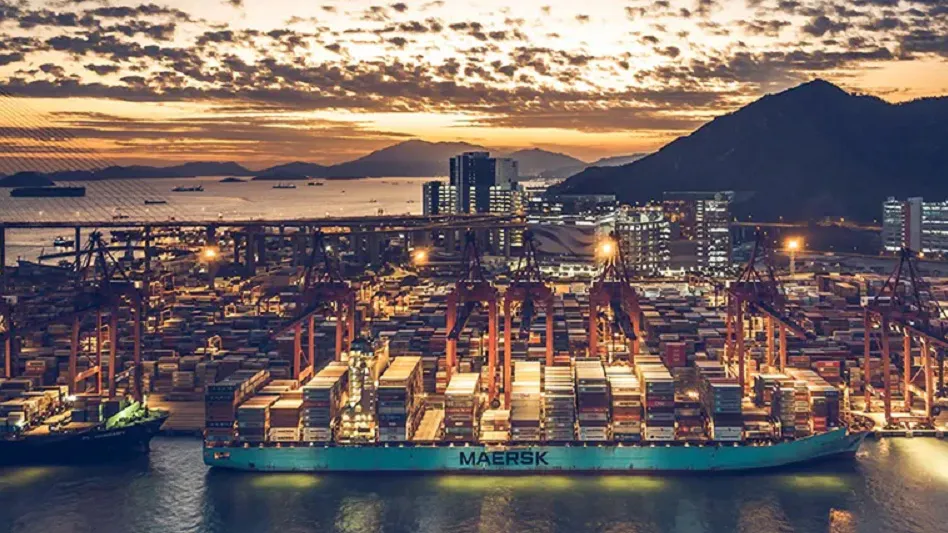
Photo courtesy of Maersk
United Kingdom-based Drewry Shipping Consultants Ltd. says its tracking and analysis shows while an imbalance in container traffic across the Pacific Ocean remains, the gap has narrowed somewhat from 2021 and 2022 levels.
In a briefing excerpted by the Greece-based Hellenic Shipping News, Drewry writes that the long-run container imbalance in the trans-Pacific (Asia to North America) market peaked in the fourth quarter of 2021, when the eastbound-to-westbound ratio reached 4.46 to 1.
“The average ratio in the first half of 2023 was 3.25, which compares to an average of 3.81 for the whole of 2022," Drewry says.
The shipping imbalance has at times worked in favor of North American shippers of ferrous, nonferrous and cardboard scrap, who can get affordable rates across the Pacific. However, the severe imbalance also can make empty containers hard to find.
The shipping consultancy cites the “China-plus sourcing movement” as showing signs of creating changes in container shipping patterns. That new sourcing philosophy, Drewry says, was prompted by “trade wars, the pandemic and heightened geopolitical volatility.”
The existence of a 3.25-to-1 ratio shows a dilution of trade between China and the United States doesn’t necessarily mean that eastbound trans-Pacific volumes, or container imbalances, will be reduced, Drewry adds, since some of the goods once made in China are now being produced in other countries in Asia.
Nonetheless, the Drewry researchers state that a great container relocation already is underway. “As Western cargo owners have looked to lessen their reliance on China, so too has China diversified the customer base for its exports," the company says.
In the U.S., the share of container imports from China, as a percentage of overall containers from Asia, has fallen from 69 percent in 2017 to 59 percent during the first five months of this year, according to Drewry.
The consulting firm also speculates that some shipments, instead of going directly to the U.S., are first being sent to either Canada or Mexico. Such triangular trading was recently discussed by the Office of U.S. Trade Representative and Mexico’s Secretary of Economy.
That trading pattern, as with nations like Vietnam or Bangladesh replacing China as goods manufacturers for the U.S. market, “won’t move the dial regarding container imbalances,” writes Drewry.
“As things stand, the relocation of some of China’s container exports as we have seen is unlikely to significantly improve container imbalances as it doesn’t greatly change regional production/consumption ratios. For the situation to dramatically improve there will need to be a step change in near-sourcing, and generally more levelling up of intercontinental imports and exports across all regions.”
Latest from Recycling Today
- Bridgestone introduces retreating plant virtual tour
- USTMA announces Tire Recycling Foundation
- Dow announces agreement with Freepoint and MOU for Asia Pacific market with SCGC
- Mixed signals chracterize ferrous market
- Researchers look into ironing out a secondary aluminum limitation
- Analysis: Chemical recycling’s ‘inflection point’ nearing
- Machinex system in Québec targets organics diversion
- Northern Shenandoah region awarded $3.9M for recycling infrastructure





